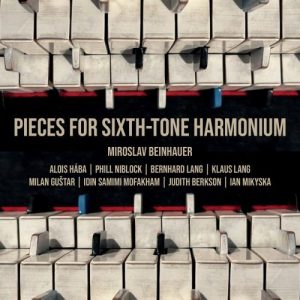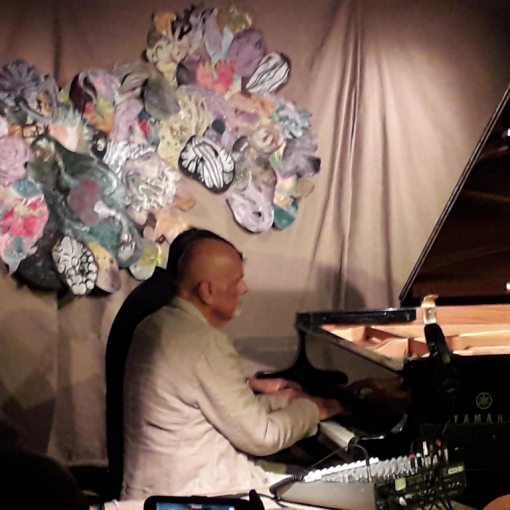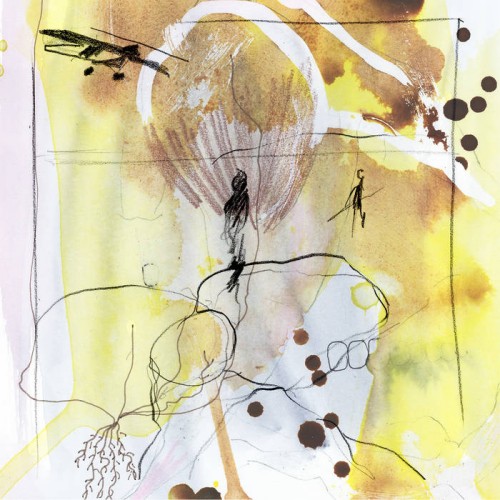 So. Lots to get through so let’s rush on — the sixth-tone harmonium is a harmonium with three registers that’s tuned very differently to your average twelve-tone equal temperament piano. The sound here is “very microtoney”. The daddy of this is Alois Hába (1893-1973), a Czech composer who saw greater harmonic possibilities from expanding the reach of Western tonality, rather than the increased compositional complexity of twelve tone (as created by Arnold Schönberg).
So. Lots to get through so let’s rush on — the sixth-tone harmonium is a harmonium with three registers that’s tuned very differently to your average twelve-tone equal temperament piano. The sound here is “very microtoney”. The daddy of this is Alois Hába (1893-1973), a Czech composer who saw greater harmonic possibilities from expanding the reach of Western tonality, rather than the increased compositional complexity of twelve tone (as created by Arnold Schönberg).
Now so there’s a few ways you can approach something like a sixth-tone harmonium. Hába was seemingly criticised for ‘objectifying’ music — turning the semantic reasoning of traditional tuning into a scientistic game. Playing about with the existing tuning system, per the critics, is to render music as merely exploring the ‘what is’ rather than telling a compelling story.
And while I won’t cede that argument — the ‘avant garde’ (such as it is) has surely expanded to include so-called ‘microtonal’ music (scepticism from me insofar as a lot of ‘microtonal’ music is simply ‘not twelve-tone equal temperament’). So we’re more comfortable with non-standard tuning systems in Western music. But.One of the things that happens more than I’d like on this record is that this harmonium, capable of producing very peculiar-sounding intervals, is used to produce a large tone cluster, a droning chord with many intervals. So where Hába was criticised for objectifying music, we get music which dotes on little more than tone clusters. Drone is a legitimate music — I’m not having a pop at a whole genre. But for my money the greater challenge lies in putting the harmonium to service of tunes.
Klaus Lang‘s composition “Not One And Not Two” on this is probably the best exemplar of how the harmonium can be used musically. It’s a simple cycle through a few chords, exploring the extra sonic territory available, with a treble register that runs through a melodic line ‘chromatically’ (although I suspect chromaticism isn’t an appropriate term here). It’s kind of weird and disjointed and excellently hauntedIan Miksyska‘s “Not The Same, Not Different” does some great work in using very similar notes and presenting them differently — using the creaks and groans of the old harmonium as much as he pushes different timbres, with a rhythmic sensibility that’s atypical for such a sonorous project. Alois Hába himself contributes “Adagio”, which gives you a lovely idea of the kind of crunchy, bright intervals we might’ve explored if his notions became more popular. Phill Niblock does what he usually does — one long, largely unchanging chord which reveals details like having the sun bore out your retina. It’s interesting, but I suspect it says more about Niblock than it says about the organ, Niblock’s voice being so recognisable.
One of the problems I’m having here is that I’m personally not convinced by minimalism, in 2024; I worry that minimalism lets us see the sonorities of an instrument in a somewhat anatomical way. It becomes a sound source rather than a new harmonic language to consider. And as these pieces are designed to be rehabilitative of Hába’s peculiar harmonium, it feels like something is being lost there. Having said that, the long droney pieces are good — Milan Guštar‘s “36 Views On EDO” ends up in a territory not dissimilar to Aube (if anyone remembers him?), shifting tonalities and sustained tensions. And also I’m conscious that drones are a large part of contemporary compositional material. Perhaps my point is just that I look forward to the instrument being approached by different musicians, in different ways.Fundamentally it’s a good record — fundamentally it’s showing off the instrument with all its wonky and unruly intervals. And therefore I, fundamentally, look forward to more people getting the opportunity to realise compositions for it.
-Kev Nickells-



